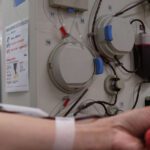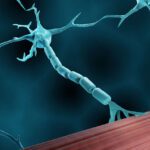Plasmapheresis for Guillain-Barre Syndrome: Benefits, Risks, and Dose
Considering plasmapheresis for Guillain-Barre syndrome? Get insights into its advantages, side effects, optimal dosage, and associated expenses. Plasmapheresis is one of the two effective treatments for Guillain-Barre syndrome (GBS), with the other being IVIG [1]. Plasmapheresis can also be called plasma exchange (PE), and it involves the following steps:
IVIG vs. Plasmapheresis
Intravenous immunoglobulin (IVIG) and plasmapheresis are both therapeutic approaches for treating autoimmune disorders. IVIG is a blood-derived product that consists of an antibodies solution. It is prepared from the serum of thousands of donors. This drug is administered at a dose of 200 - 400 mg/kg body weight over 5 days (or as a physician suggests). Conversely, plasmapheresis involves a procedure wherein blood plasma is extracted from the body and subsequently replaced with suitable fluids. This treatment has garnered recognition for its effectiveness in managing autoimmune disorders, neurological conditions, and various other ailments.
What To Do When IVIG Doesn’t Work
Worried about what to do when intravenous immune globulin (IVIG) doesn’t work or fails to work as expected? Take a breath. You have several treatment options with comparable or even better outcomes. When IVIG doesn’t work, your provider may recommend alternative treatments, such as plasmapheresis, corticosteroids, and immunosuppressive agents.
Toxic Epidermal Necrolysis (TEN): Causes, Symptoms, Treatment, and Survival Rate
Toxic epidermal necrolysis (TEN) is a rare, life-threatening skin reaction. It is most commonly triggered by certain medications. However, in rare cases, it can be caused by infections or vaccinations. A severe form of Steven-Johnson’s syndrome (SJS), TEN is diagnosed when you have large areas of blistering and peeling skin on more than 30% of your body. TEN also causes extensive damage to the moist linings (mucous membranes) in the mouth, nose, throat, eyes, and genitals.
CIDP and Physical Therapy: How Supervised Exercises Can Help Improve Quality of Life
Chronic inflammatory demyelinating polyneuropathy (CIDP) reduces your ability to perform activities that are considered “standard” or “normal” for a healthy person to complete. This is called exercise intolerance. Physical therapy uses individualized exercise programs to help you carry out daily activities.
Can CIDP Be Reversed? A Closer Look at the Evidence
Though CIDP is treatable and some symptoms can be reversed, complete recovery is rare. CIDP (chronic inflammatory demyelinating polyneuropathy) is a rare autoimmune disorder. In people with CIDP, the immune system damages the peripheral nerves (nerves outside the brain and spinal cord). This condition affects about 30,000 Americans [1]. Primary treatments include corticosteroids, plasmapheresis (plasma exchange-PE), and IVIG.
AIDP vs. CIDP: Unraveling the Similarities and Differences
Acute Inflammatory Demyelinating Polyneuropathy (AIDP) and Chronic Inflammatory Demyelinating Polyneuropathy (CIDP) are both neurological disorders in which the body’s immune system attacks its own nerves and can lead to paralysis. While both disorders have similar symptoms, they differ in duration and progression. Understanding the differences can be crucial for your treatment of these disorders.
Understanding Myasthenic Crises: What You Need to Know
Not everyone with myasthenia gravis (MG) develops a myasthenic crisis. However, when it occurs, it can be life-threatening. This article discusses the symptoms, causes, precipitating factors, diagnosis, and treatment of myasthenic crises. Myasthenia gravis is an autoimmune problem that causes muscle weakness throughout your body.
Understanding Lambert-Eaton Syndrome: A Rare Disorder
Lambert-Eaton syndrome (LEMS) is a rare disorder that occurs as a result of an immune system attack on the neuromuscular junction (a point where nerves send signals to your muscles). The damage at the neuromuscular junction causes impaired nerve signal transmission to the muscles, which results in gradual muscle weakness and a range of other symptoms. This condition is often referred to as Lambert-Eaton myasthenic syndrome due to the similarities of its symptoms to myasthenia gravis (a type of neuromuscular junction disorder).
CIDP Disease Life Expectancy: What You Should Know
In general, CIDP disease life expectancy for patients is comparable to that of healthy counterparts, however, the quality of life may be significantly impacted. Quadriplegia (paralysis of the arms and legs), respiratory failure, and death rarely occur. Highlights: CIDP is a rare neurological disorder affecting nerves outside your brain and spinal cord.













